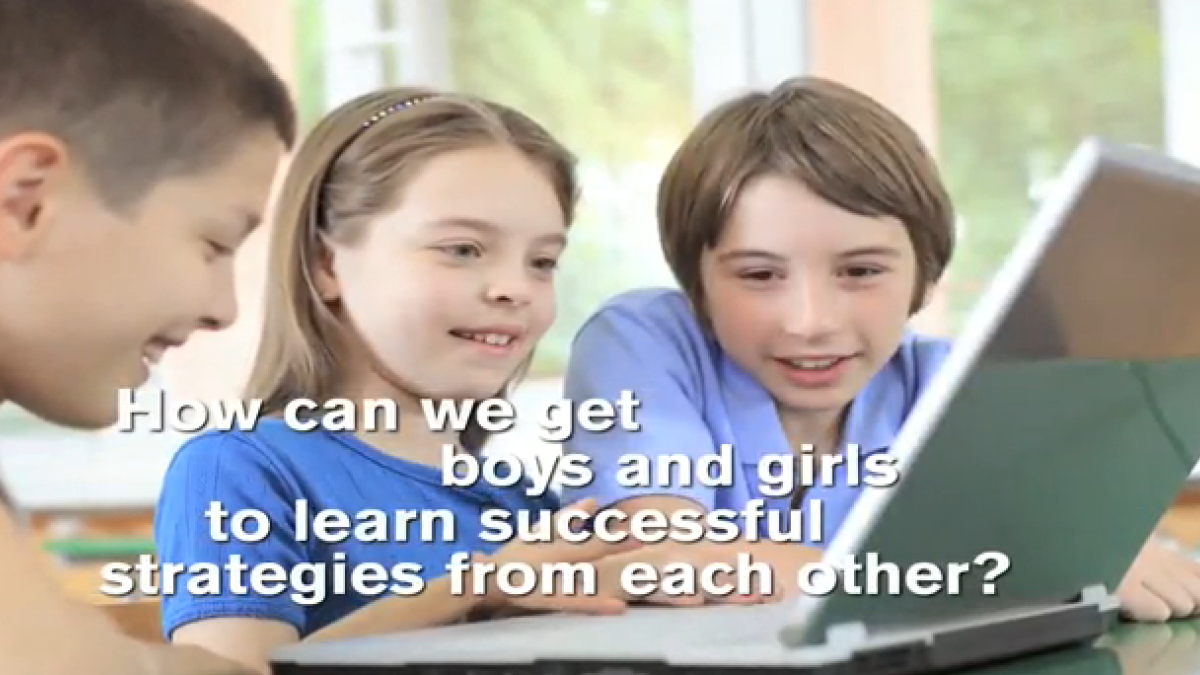Program offers early intervention to improve how boys, girls treat each other

The news is shocking for parents and for students. A new survey by the American Association of University Women reports that 48 percent of students in grades 7-12 have experienced some form of sexual harassment.
Those students who are doing the harassing oftentimes think they are being funny, but nearly a third who are victims said the harassment made them feel sick, affected studying or made them reluctant to go to school at all, according to the survey.
Arizona State University child developmentalists are working to change the ways that boys and girls interact and engage each other through early intervention in schools.
Richard Fabes, Carol Martin, Laura Hanish and Kimberly Updegraff, professors in ASU’s School of Social and Family Dynamics, in the College of Liberal Arts and Sciences, are developing the Sanford Harmony Program that is designed to enhance relationships among girls and boys. The Sanford Harmony Program combines cutting-edge research, best practices, tested curricula and training programs, and the dissemination of these to improve the ways that boys and girls think about and treat one another.
The Sanford Harmony program at ASU is currently being implemented in several early childhood and intermediate classrooms across the Phoenix metropolitan area. One teacher who instructs older students reported that, “I liked the fact that it facilitated dialogue between students who wouldn’t normally interact with each other. I also enjoyed watching students of opposite sexes discovering traits and interests that they have in common.”
The program is the only one of its kind that is designed specifically to help boys and girls learn more about each other, develop positive attitudes and behaviors towards each other, and inspire mutual respect and cooperation in their everyday lives.
“The Sanford Harmony Program promotes a positive learning environment in classrooms," said Fabes, a Sanford Harmony Program executive director and director of the School of Social and Family Dynamics. "We believe that enhancing harmony between boys and girls in the classroom will improve learning and performance, and the preliminary data we have support this. All of this should help reduce sexual harassment.”
Boys and girls from a very young age of three to four years tend to prefer to play and interact with members of their own sex, establishing a pattern of growing up in separate worlds – one for boys and one for girls. They play more often with members of the same sex and, because they learn specific behaviors associated with their own gender groups, over time they may become less comfortable with the other sex, according to the ASU child developmentalists.
That’s when the cycle of separateness can begin. And, unfortunately, the separateness becomes exaggerated over childhood. Puberty brings a strong attraction to the other sex, but girls and boys may be ill-prepared to interact, setting the stage for developing negative attitudes and engaging in actions such as sexual harassment. Boys and girls who learn to interact effectively with one another in early years are better equipped to minimize conflict and mistreatment in future relationships, Fabes said.
The goals of the Sanford Harmony Program are to conduct comprehensive research to understand the factors that contribute to the development of negative attitudes and behaviors toward the other sex by some children and adolescents and to develop cost-effective, community-based prevention and intervention programs that promote positive relationships between boys and girls. The ASU researchers also are working on testing, marketing and disseminating these programs and adapting them for use in a variety of settings.
“We have established a partnership with experienced and committed teachers and educators, and they have helped us develop an innovative program that improves the ways boys and girls treat one another," Martin said. "It is specifically designed to address issues such as those identified in this latest report on sexual harassment. Through the vision and generosity of T. Denny Sanford, we have been able to create a new way for teachers to bring boys and girls together to learn about each other and have positive experiences that they carry forward with them in and out of school.”
More information about the program can be found at their website http://sanfordharmonyprogram.org or on Facebook, https://www.facebook.com/SanfordHarmonyProgram.
To watch a brief video on the program, visit http://www.youtube.com/watch?v=YBd-4HJA0hk.
A Teacher Resource Center is available through the Sanford Harmony Program website that provides teachers with a book list, cooperative activities, classroom routines, teacher-to-teacher interactions, links and resources, and a contact for the program.